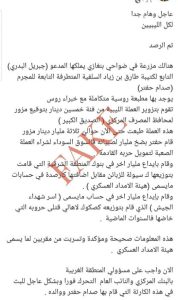The Central Bank of Libya’s announcement of the existence of a local currency of 50 dinars of unknown origin that is circulating in the markets and is currently under investigation procedures by the Attorney General’s Office has caused confusion on the Libyan street, especially in the exchanges of public markets and shops.
The Central Bank of Libya is considering withdrawing the 50-dinar currency from circulation, after noticing the existence of three denominations of fifty dinars in the market, the first denomination issued by the Central Bank in Tripoli, the second issued by the Central Bank in Benghazi, and the third is “of unknown origin” and is now subject to the procedures of the Public Prosecutor’s investigation.
The government mandated by the House of Representatives, headed by Osama Hammad, considered that the refusal of some shops and commercial centers to accept the Libyan currency denomination of 50 dinars from citizens is criminalized by law, and affects the national economy.
Even more surprisingly, one of them tried to exploit the situation to his advantage in an attempt to offend Russia, posting leaflets on social media accusing Russia of printing counterfeit banknotes.

For its part, the Embassy of the Russian Federation to the State of Libya published a statement through its pages on social networking sites denying rumors that circulated on social networks about the presence of a Russian printing press on a farm on the outskirts of Benghazi issuing counterfeit Libyan coins in the denomination of fifty dinars.
The Russian diplomatic mission stressed that these allegations are baseless and consider them lies promoted with the aim of changing the Libyan people’s view about the real reasons behind the sudden rise in the price of the dollar.
The embassy explained that those who promote these rumors seek to sow hatred and deepen the division between the unity of the Libyan ranks, in an attempt to distort relations between the Russian and Libyan peoples.
